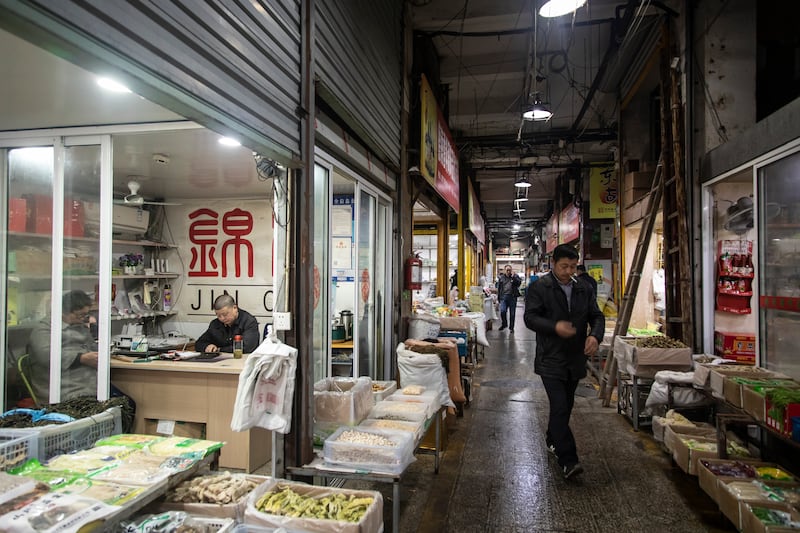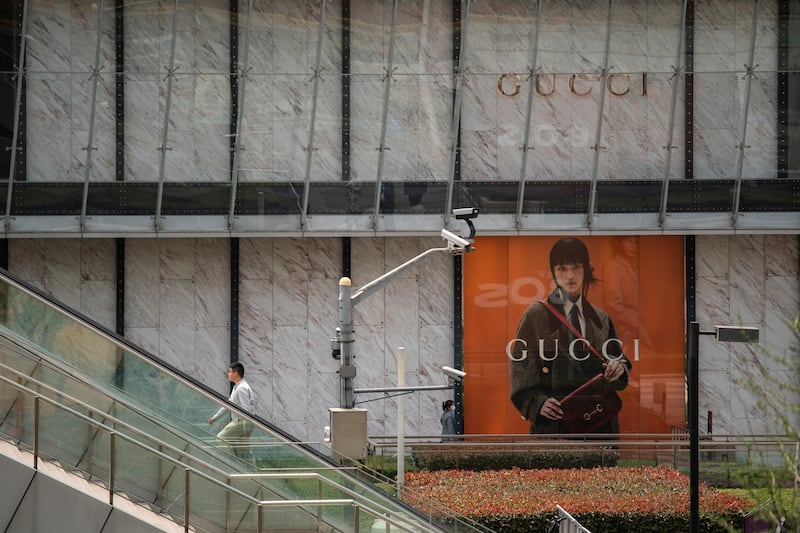For more than a quarter-century, China has been synonymous with relentless development and upward mobility. As its 1.4 billion people gained an appetite for the wares of the world – Hollywood movies, South Korean electronics, iron ore mined in Australia – the global economy was propelled by a seemingly inexhaustible engine.
Now that engine is sputtering, posing alarming risks for Chinese households and economies around the planet. Long the centrepiece of a profit-enhancing version of globalisation, China has devolved into the ultimate wild card in a moment of extraordinary uncertainty for the world’s economy.
The risks have been amplified in recent weeks by a slew of developments.
First came word that China’s economy had slowed substantially in the spring, extinguishing hopes of a robust expansion following the lifting of extreme Covid restrictions.
This week brought data showing that China’s exports have declined for three months in a row, while imports have dropped for five consecutive months – another indicator of flagging prospects.
Then came news that prices have fallen on a range of goods, from food to apartments, raising the spectre that China could be on the brink of so-called deflation, or sustained drops in prices, a harbinger of anaemic commercial activity.
And in a sign of deepening distress in China’s housing market – the intersection of finance, construction and household wealth – a major real estate developer called Country Garden missed payments on its bonds and estimated it lost up to $7.6 billion (€6.9 billion) in the first half of the year.

For Chinese workers and households, these events added up to trouble. Around the globe, a weakening Chinese economy signalled a shrinking of demand for major goods – from soybeans harvested in Brazil, to beef raised in the United States, to luxury goods made in Italy. It spelled less appetite for oil, minerals and other building blocks of industry.
“The slowdown in China is definitely going to weigh on the global economic outlook,” said Larry Hu, Hong Kong-based chief China economist for Macquarie, the Australian financial services firm. “Because China is now the number one commodity consumer in the world, the impact is going to be pretty, pretty big.”
Over the past decade, China has been the source of more than 40 per cent of global economic growth, compared with 22 per cent for the United States and 9 per cent from the 20 countries that use the euro, according to recent analysis from BCA Research.
Adding to the worry is the widespread sense that Chinese authorities are limited in their options to reinvigorate the economy, given mounting debts now estimated at 282 per cent of national output – more than that of the United States.
The government has outlined spending programmes aimed at spurring consumers to spend and businesses to invest. But the details have been opaque, while leaving the impression that local governments will be stuck with the bill. Local governments are at the centre of concerns about the debt crisis. They had borrowed aggressively for years to finance the construction of roads, bridges and industrial parks.
All of this is playing out as China’s ruling Communist Party tries to transition from an economy powered by state-directed investments in infrastructure and exports to one led by domestic consumer spending.
The old model has run its course. It worked remarkably well for the two decades spanning the millennium, when the government financed ports, electrical grids and other basic works for an export-led factory boom.
At the same time, private entrepreneurs started some of the world’s more innovative and valuable technology companies. In more recent years, many have been constrained by a regulatory crackdown overseen by president Xi Jinping.
In the rest of the world – and especially in the United States – China’s staggering export growth and the loss of domestic factory jobs have set off conflicts over trade.
The Trump administration in the US imposed across-the-board tariffs on Chinese imports. The Biden administration has continued that policy, adding prohibitions on investment in key Chinese sectors such as advanced computer chips. president Joe Biden intensified that campaign in signing an executive order Wednesday banning investment into industries that can bolster China’s military capabilities.
On Thursday, Biden referred to China’s economic vulnerabilities as “a ticking time bomb,” adding, “When bad folks have problems, they do bad things.”
Xi has previously accused the United States of running a campaign aimed at suppressing China’s development.
Faced with hostilities between Washington and Beijing and chastened during the pandemic by the difficulties moving products from Chinese factories to retailers in North America and Europe, multinational companies have shifted factory orders to countries like Vietnam, India and Mexico.
For Chinese policymakers, the alterations to the geography of international commerce have added urgency to the transition toward an economy centred on domestic spending power.
Still, those designs were halted by the pandemic. The government imposed draconian restrictions on business and freedom of movement, locking down whole cities.
The lifting of those controls in December, following an extraordinary series of public protests, was widely anticipated as a catalyst for consumer spending.
But consumer spending has been weak – so weak that China’s National Bureau of Statistics recently halted the release of data that drew attention to the economy’s problems.

Chinese households have long been some of the most prodigious savers on earth, owing to the fact that social safety nets are meagre. Over the first half of this year, total household deposits in the Chinese banking system grew by some 12 trillion Chinese yuan (€1.5 trillion), the largest expansion in a decade.
But the increased savings, as well as the weakness of investment and consumer spending, appears to reflect a general erosion of public faith. During the pandemic, policy lurched from total lockdown to no controls – what economist Adam Posen recently called “economic long Covid.”
For China’s consumers, some of the extra ardour for stashing cash reflects the widespread recognition that real estate is a story full of unhappy endings. Decades of overinvestment by developers has yielded entire cities full of empty apartment blocks. As prices plunge, developers are halting projects midstream, leaving the skeletons of high-rises serving as monuments to a speculative bonanza gone awry.
This basic story has provoked comparisons to Japan, where the bursting of a speculative real estate bubble in the early 1990s led the country into three decades of decline.
Central to Japan’s slide was deflation, a term that sends shivers up the spines of economists.
Deflation works its way into a society’s basic expectations, destroying incentives to spend, expand businesses or hire workers, given the likelihood that everything will be cheaper later. What is, for individuals, a rational thrift metastasises into decline for society.
Most economists think China will avoid that fate. Falling prices may soon reverse. And the government appears to have moderated its attacks on successful private businesses.
After years of demonising private entrepreneurs, the government has lately signalled a pivot to a more “pro-growth, pro-business mindset,” said Bruce Pang, chief economist for Greater China at JLL, a real estate and investment management firm in Hong Kong. “The key policy priority will be how to boost domestic demand.”
In the most optimistic scenario, the government will engineer a gradual transition to slower growth, trading factory jobs for those in services, while containing the size of real estate losses.
Yet if the debt hanging over China’s economy limits the potency of the government’s response, that could bring about the worst fears: a plunge in housing prices, followed by expensive rescues of strapped lenders, and an unruly exodus of money.
That outcome most unnerves government officials, given that it could bring joblessness, business insolvencies and social strife.
Such images undergird the assumption that the government will intensify its efforts to stimulate the economy, even as doing so may exacerbate the foundational threats to the economy, creating fresh debts.
Yet even if the government succeeds in overseeing a gradual economic slowdown, some see mounting challenges that threaten to provoke significant volatility.
The continued shifting of factory work away from China, along with the focus on centring the economy on domestic consumption, is likely to push down wages and household wealth. And even in a country controlled by a single unelected party, the loss of faith of large numbers of people may bring turbulence.
China’s exports and imports collectively make up 40 per cent of its total economic output, Yasheng Huang, an economics professor at MIT’s Sloan School of Management, noted at a conference in May. Many of China’s imports are components for exported factory goods. So the more that China’s exports drop, the more that imports do, too – a feedback loop of diminishing fortunes.
That drags down jobs and incomes, Huang said. “There’s no way it is a happy story.”
This article originally appeared in The New York Times.
2023 The New York Times Company










